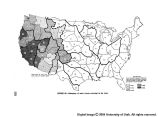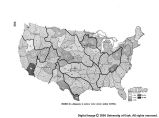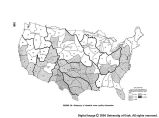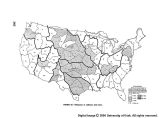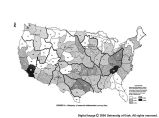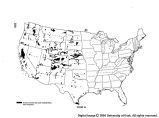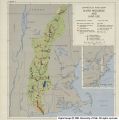| OCR Text |
Show plant cost in 50 years, other incidental expenses, and in- terest. This project cost $8,677,000, of which $4,500,000 was a grant from the United States. 31. Pensacola project, Oklahoma.-The Pensacola Project on the Grand River in Oklahoma was constructed between 1938-41 to develop hydroelectric power and flood control, and has fulfilled these purposes. Some unantici- pated erosion has developed below the spillway and had adequate tests been made on the foundation rock it might have been possible to definitely forecast such erosion and construct suitable spillway aprons originally. The project is operated economically as a power project and in accord- ance with the direction of the Secretary of the Army in the interest of flood control to the extent that such flood- control stora-ge is available. Under Executive Order dated November 21, 1941, this project was taken over under section 16 of the Federal Power Act and operated by the United States during the recent war emergency. It was returned to the licensee on August 31, 1946, under the Act of July 31, 1946 (60 Stat. 743). The project cost about $21 million, of which about $10 million was a grant from Public Works Administration. In addition the Government is in the process of purchasing lands between elevations 750 and 755, the uppermost of the reservoir reserved for flood control. Available records indicate that the project has been operating at a profit. Non-Federal Power Projects 32. Bagnell project, Missouri.-The Bagnell project on the Osage River in Missouri was constructed between 1929-31 to develop hydroelectric power and has ful- filled this purpose. This project was designed prior to the experience of large floods on the Osage River, and prior to the recent methods used in estimating such floods. Experience with large floods subsequent to operation of the project has made it necessary to protect the power plant from damage due to tailwater. Since the May 1943 flood trie licensee relocated some transmission lines to prevent damage from high water and constructed a flood wall about 4 feet high over the deck of the generator room to prevent flooding for a discharge of about 245,000 second-feet past the power plant. The project was origi- nally designed as a power project with no provision for flood control storage. Subsequent to its construction the Commission received many complaints of flood damages to riparian owners downstream from the dam presum- ably resulting from the operation of the Bagnell Dam. The Commission staff investigated this matter, including a public hearing, and on June 3, 1947, the Commission issued an ordler prescribing operating regulations for the purpose of assuring that the operation of the project would not aggravate floods. Actually, in the normal operation of the proj eat certain of the flash floods were reduced in severity, thus benefiting downstream riparian owners. The project has been operating efficiently for the produc- tion of hydroelectric power. 33. Bartletts Ferry project, Georgia.-The Bartletts Ferry project on the Chattahoochee River in Georgia was constructed fcetween 1925-28 to develop hydroelectric power and has fulfilled this purpose. Inspections and tests made in. 1949 revealed that the drainage system In the dam was not functioning properly. It was decided to strengthen th.e dam by the use of a prestressed system of buttresses subsequent to a general grouting operating, thus improving the safety factor of the structures. In addi- tion, the earth abutment sections are being raised to pro- vide additional freeboard during times of flood. The project has been operated efficiently for the production of hydroelectric power consistent with the safety of the project structures and in conformance with the special conditions of the license relating to navigation and public health. This project fits into a comprehensive plan of development and the licensee is now installing an addi- tional 20,000-kilowatt unit in the power plant. 34. Saluda project, South Carolina.-The Saluda project on the Saluda River in South Carolina was con- structed between 1927-30 to develop hydroelectric power and has fulfilled this purpose. Alterations to the dam and enlargement of its spillway and spillway discharge channel were completed in recent years in accordance with more recent views regarding the designs of earthen dams and spillways, and including actual soil analysis of the materials in the dam. These remedial measures have enabled the licensee to operate the project for full realiza- tion of maximum benefits for the past 4 years. 35. Chelan project, Washington.-The Chelan project on Ghelan Lake and River, tributary to the Columbia River near Wenatchee, Wash., was constructed between 1926-28 to develop hydroelectric power and it has ful- filled its purpose. The project makes efficient use of the stream flow of the Chelan River except as limited by license requirements to operate Lake Chelan within certain pre- scribed limits during the summer months for the purpose of recreation. Lake Chelan is used extensively for this purpose. 36. Claytor project, Virginia.-The Claytor project on the New River, tributary to the Kanawha River, near Radford, Va., was constructed between 1934-39 to de- velop hydroelectric power and it has fulfilled its purpose. The license provides that the discharge from the project shall at all times be regulated by such rules and regulations as the Secretary of the Army may prescribe to prevent undue interference with navigation. The license also permits the United States to construct navigation facilities at the project if and when required. The project is operated efficiently for the generation of hydroelectric power. 37. Rock Island project, Washington.-The Rock Island project on the Columbia River near Wenatchee, Wash., was constructed between 1930-33 to develop hydroelectric power and it has fulfilled its purpose as limited by its present installation. The project as it now exists does not make best use of the head or regulated flow in the river. However, available records indicate that when the project is completed to its ultimate height and the installation of the power plant is completed, the project will then fit into the comprehensive plan for the Columbia River Basin. This project has been involved in condem- nation proceedings with the Public Utility Districts of the State of Washington. Although it may be justified at this time to complete construction of the Rock Island project, the licensee claims it cannot finance the construc- tion. The project generates power and utilizes the flow of the river to the capacity of its turbines. 38. Power plants at navigation dams, Kanawha River, West Virginia.-Kanawha Valley Power Co. constructed between 1934 and 1937 and is operating under Federal Power Commission licenses powerhouses at the London, 398 |





















































